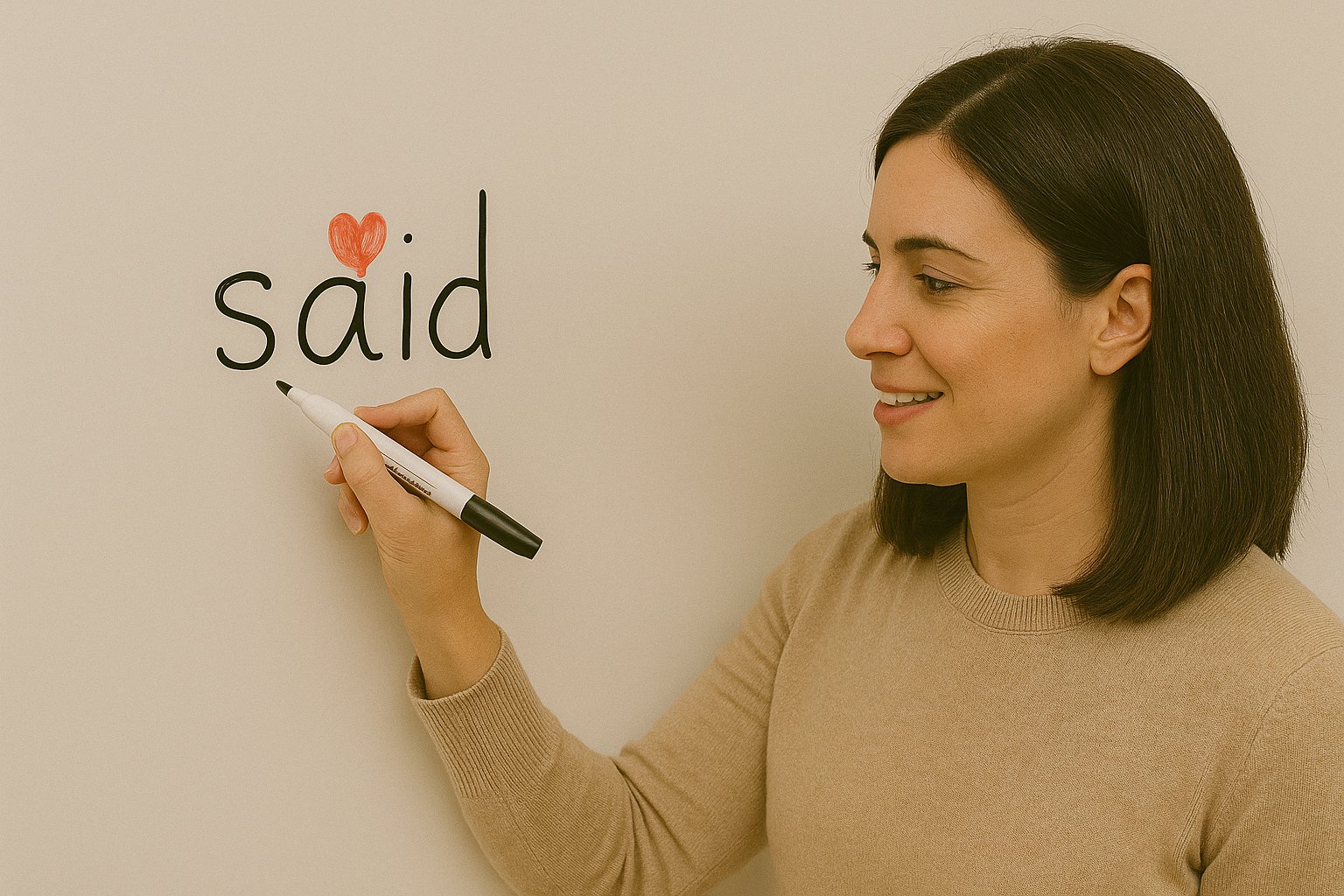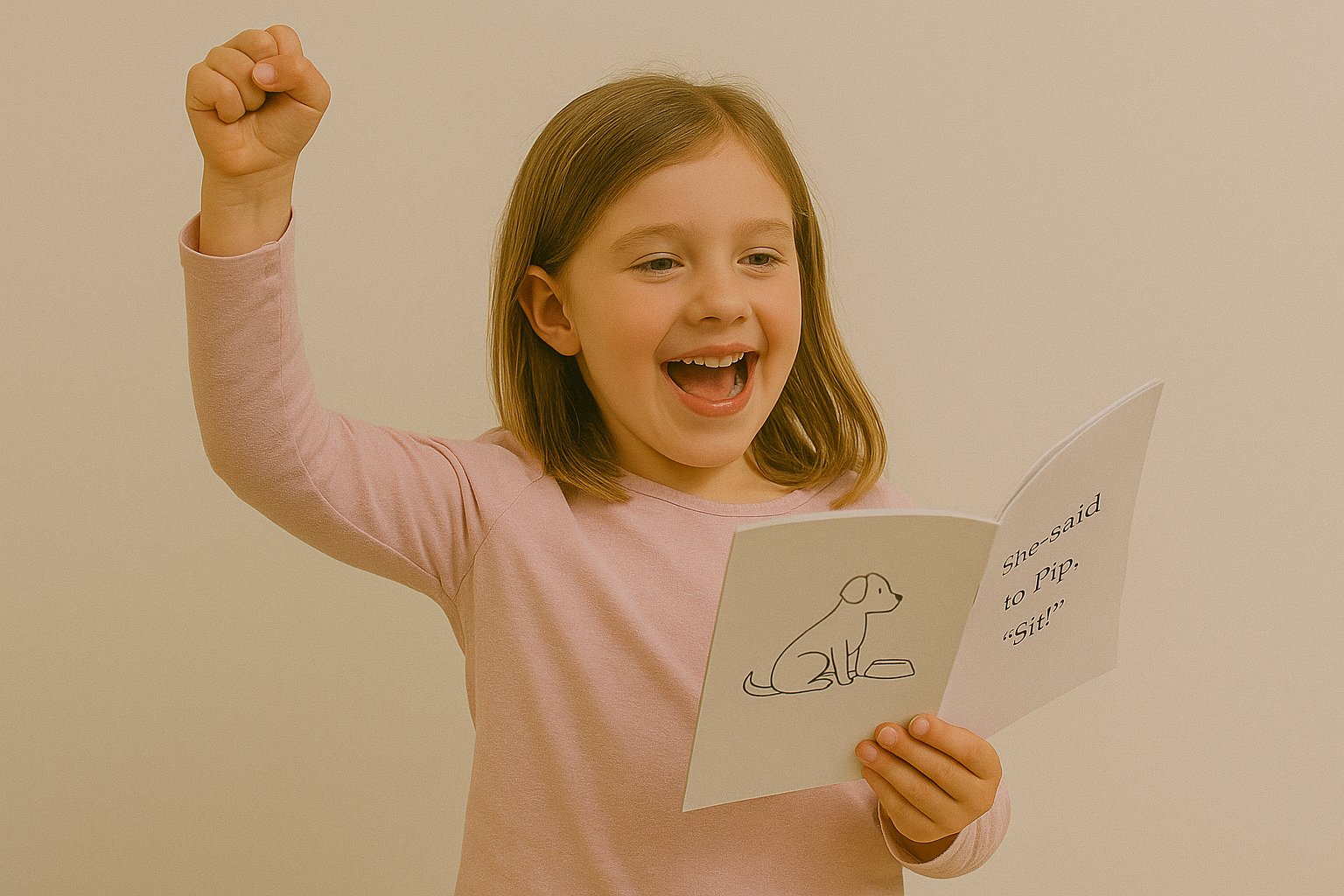
Introduction
Sight words (in modern, research-based use) means any word a student can read instantly—after it’s been mapped to memory. Heart words are high-frequency words with one or more tricky spellings students must “learn by heart” after mapping all the regular parts with sounds. Don’t teach giant lists by rote. Teach sounds → spellings → mark only the unpredictable bits with a heart.
What Are Sight Words?
“Sight word” is an outcome, not a method. A sight word is any word a student recognizes instantly—because the brain has securely mapped its sounds and spellings (orthographic mapping). This includes regular decodable words (cat, into) and irregular high-frequency words (said, was) once learned.
What Are Heart Words?
Heart words are the subset of high-frequency words that contain one or more unpredictable spellings for beginners. We teach them by mapping every predictable part with phoneme–grapheme knowledge and marking the tricky part with a small heart. Example: said — the ai doesn’t make its usual /ā/; students “learn that part by heart.”
Key Differences at a Glance
| Feature | Sight Words | Heart Words |
|---|---|---|
| Meaning | Any word read instantly (automatic) | HFWs with parts to memorize “by heart” |
| Teaching Focus | Orthographic mapping via sounds→letters | Map regular parts; mark only irregular bits |
| Examples | and, into, like (once mapped) | said, was, one, of |
| What to Avoid | Rote visual memorization without sounds | Putting hearts on predictable spellings |
| Goal | Accurate, instant recognition in text | Make tricky spellings stick—then automatic |
How to Teach Them the Right Way (Step-by-Step)
- Say it, tap it: Students say the word naturally in a sentence (I said yes.).
- Stretch sounds: Oral phoneme analysis (/s/ /e/ /d/ for said).
- Map to print: Write graphemes for each sound. Circle the predictable parts; heart the unpredictable part.
- Encode then decode: Build → read → write the word in phrases/sentences.
- Spaced practice: Revisit across the week in short bursts within decodable text.
Coach’s take: Treat “sight words” as the result of mapping, not a giant guessing list. Your future you will thank you.
Free Activities & Games (Click & Go)
Map Sounds to Spellings (Foundational)
- Online Elkonin Boxes — drag a chip per phoneme; write the grapheme; draw a ♥ over the tricky part.
- Phonetic Blending Cards — rapid blending/segmenting sprint for HFWs and decodables.
Build Automaticity with High-Frequency Words
- Reading Fruit Ninja — pre-primer/primer sets for quick sight recognition.
- Phonics Talent Show — CVC families support fast recognition in simple text.
Bridge to Continuous Text (Decoding + Fluency)
- Read & Race — cumulative decoding with repeated exposure to HFWs.
- Digraph Detectives — link mapped heart words to common graphemes.
- Stitch’s Phonics Spelling Quest — encode HFWs for stronger memory.
Need a custom HFW list (e.g., said, were, does, come, some)? ➕ Build your own ABZ game in minutes and assign it to centers or home practice.
Assessment & Progress Monitoring
Keep it fast, frequent, and focused on automaticity + accuracy. Use this mini-dashboard:
| Measure | Quick Probe | K–2 Target | Frequency | ABZ Tool/Game |
|---|---|---|---|---|
| Instant Recognition | Read 20 HFWs (1s time cap) | ≥ 90% correct | Bi-weekly | Reading Fruit Ninja |
| Encoding (Spelling) | Write 10 target HFWs in dictation | 8+/10 correct | Bi-weekly | Stitch’s Spelling Quest |
| Transfer to Text | Read 100-word decodable | ≥ 95% acc. & steady rate | Monthly | Read & Race |
Pro tip: If accuracy is high but speed is low, keep words in spiral review for another week and increase oral→print→text reps.
FAQs
Should I still use “sight word lists”?
Yes—but teach each word through sounds→letters first. Use lists for sequence, not for rote visual memorization.
Which words need a heart?
Only the unpredictable graphemes for beginners (e.g., said = s + ♥ai + d). Don’t heart what students can decode with taught patterns.
How soon do I connect to real reading?
Immediately. After mapping, place the word in decodable sentences and short texts the same day.
Do older strugglers need heart words?
Often yes. A short cycle of map→heart→encode→read closes gaps fast, especially when paired with targeted phonics.
Conclusion
Make it make sense, not magic. Map the sounds, mark the curveballs, and move into text. That’s how “sight words” become truly in sight—and how readers fly.
Explore all ABZ Learning resources or create a custom HFW game in minutes.
